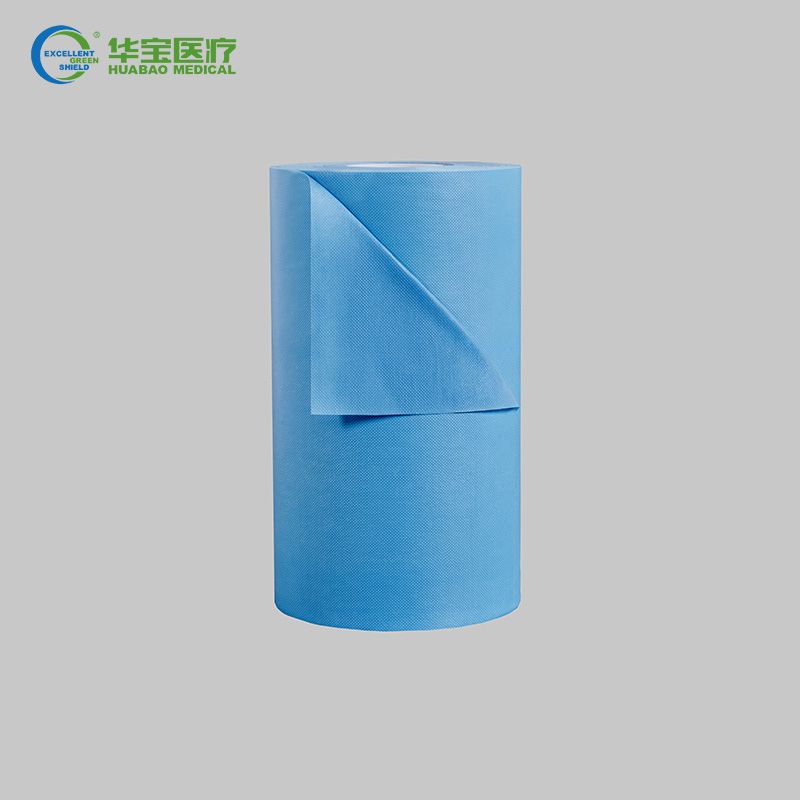Your Position: Home - Medical Consumables - The Complete Guide to Hydrophilic Non Woven Fabric
Hydrophilic non-woven fabric is a versatile material with numerous applications across various industries. Here's a complete guide to understanding its properties, uses, manufacturing process, and key considerations:
What is Hydrophilic Non-Woven Fabric? Hydrophilic non-woven fabric is a type of non-woven material that possesses the ability to absorb and retain water. Unlike hydrophobic materials, which repel water, hydrophilic fabrics attract and hold moisture, making them ideal for applications where fluid absorption is desirable.
Properties of Hydrophilic Non-Woven Fabric:
Water Absorption: Hydrophilic non-woven fabric has a high affinity for water, allowing it to quickly absorb and retain moisture.
Softness: It is often soft and gentle on the skin, making it suitable for use in products intended for personal care and medical applications.
Breathability: Despite its ability to absorb water, hydrophilic non-woven fabric can remain breathable, allowing air and moisture vapor to pass through.
Durable: Depending on the manufacturing process and material composition, hydrophilic non-woven fabric can be engineered to be durable and resistant to tearing or fraying.
Biocompatibility: Some hydrophilic materials are biocompatible, meaning they are safe for use in contact with living tissues and can be used in medical applications without causing adverse reactions.
Uses and Applications: Hydrophilic non-woven fabric finds applications in a wide range of industries and products, including:

Medical and Healthcare: Surgical drapes, gowns, wound dressings, disposable bed linens, absorbent pads, and diapers.
Personal Care: Feminine hygiene products, baby diapers, adult incontinence products, wet wipes, and cosmetic pads.
Hygiene and Cleaning: Disposable cleaning cloths, mop heads, absorbent pads, and industrial wipes.
Apparel: Lining materials, interlining, and moisture-wicking fabrics for sportswear and activewear.
Packaging: Protective packaging materials, absorbent pads for food packaging, and moisture barrier layers in packaging films.
Featured content:Manufacturing Process: The manufacturing process of hydrophilic non-woven fabric typically involves the following steps:
Material Selection: Synthetic fibers such as polypropylene, polyester, or viscose are commonly used to produce hydrophilic non-woven fabric.
Web Formation: The selected fibers are formed into a web using processes such as carding, airlaid, or spunbonding.
Hydrophilic Treatment: The non-woven web undergoes a hydrophilic treatment, which can involve chemical treatments, surface modifications, or the addition of hydrophilic agents.
Bonding: The fibers in the web are bonded together using methods such as thermal bonding, chemical bonding, or needle punching.
Finishing: The finished fabric may undergo additional finishing processes such as calendering, embossing, or coating to enhance its properties and performance.
Key Considerations When Choosing Hydrophilic Non-Woven Fabric:
Absorption Capacity: Consider the level of water absorption required for your specific application.
Skin Compatibility: Ensure that the fabric is gentle on the skin and suitable for use in medical and personal care products.
Strength and Durability: Assess the fabric's strength and durability to ensure it meets the requirements of your application.
Regulatory Compliance: Verify that the fabric complies with relevant industry standards and regulations, especially for medical and hygiene applications.
Cost and Availability: Consider the cost-effectiveness and availability of the fabric, balancing quality with affordability.
In conclusion, medical hydrophilic non-woven fabric offers excellent water absorption properties, softness, breathability, and versatility, making it suitable for a wide range of applications across various industries. Understanding its properties, uses, manufacturing process, and key considerations is essential for selecting the right fabric for your specific needs.
213
0
0
Comments
All Comments (0)
Related Articles
“Hospital bed vs adjustable bed: Which is better?”
**Hospital Bed vs Adjustable Bed: Which is Better?
By Harry
52
0
0
Revamping Bed-Check Hospital Procedures for 2024
**Revamping Bed-Check Hospital Procedures for 2024**.
By Geym
51
0
0
How Does a Digital Slit Lamp with Quick Image Processing Enhance Eye Care?
# How Does a Digital Slit Lamp with Quick Image Processing Enhance Eye Care?
By Molly
58
0
0
Exploring the Benefits of Compact ICGA Fundus Cameras
In recent years, the advancement in diagnostic imaging has significantly improved the way healthcare professionals assess and treat ocular conditions.
By Joy
72
0
0
Sutures Vs Stitches or Staples: Which to Choose in 2024?
Surgical wound closure is a crucial aspect of medical procedures, and choosing the right method can significantly influence healing and recovery.
By Monica
57
0
0
Why Choose a Slit Lamp Second Hand?
Understanding Slit LampsSlit lamps are essential tools in optometry and ophthalmology, allowing eye care professionals to examine the anterior segment of the eye in detail.
By Heather
55
0
0
Top Manual Hospital Beds for Sale in 2024
## Exploring the Top Manual Hospital Beds for Sale in 2024.
By Alice
65
0
0
How does a retina scanner enhance security measures?
## Understanding the Technology Behind Retina Scanners.
By sufeifei
59
0
0